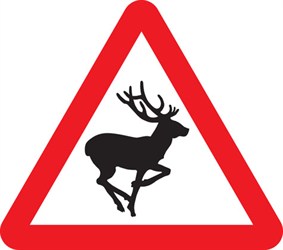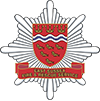Did you know?

- As many as 1.5 million deer live wild in Britain
- There are six main species of deer of various sizes
- There are up to 74,000 deer-related traffic accidents in the UK each year
- There are several hundred human injuries and several human fatalities each year as a result
- In 2018, there were 235 deer collisions in the Ashdown Forest area alone.
If you see a deer on the road, be aware that others may well cross after the one you have noticed: deer will more often move around in groups than alone.
Do take note of deer warning signs
- Such signs are positioned only where animal crossings are very likely - but they could happen anywhere.
Beware during peak danger periods
- Peaks in deer vehicle collisions occur October to December and also in May.
- Highest-risk times are from sunset to midnight, and the hours shortly before and after sunrise.
Drive with caution
- During danger periods or on roads where hitting a deer is a possibility, drive with caution at or below the posted speed limit.
Seen one? Look for another
- Be aware that further deer may well cross after the one you have noticed, particularly during the mating season, but also where deer are in herds.
Use your lights
- After dark, do use full-beam when there is no opposing traffic. The headlight beam will illuminate the eyes of deer on or near a roadway and provide greater driver reaction time. BUT, when a deer or other animal is noted on the road, dim your headlights as animals startled by the beam may ‘freeze’ rather than leaving the road.
Don't over-swerve to avoid hitting a deer
- If a collision with the animal seems inevitable, then hit it while maintaining full control of your car.
- The alternative of swerving into oncoming traffic or off of the road surface could be even worse. Motorcyclists are at particular risk when in direct collisions with animals.
Cars behind you
- Only brake sharply and stop if there is no danger of being hit by following traffic, use your hazard lights. Try to come to a stop as far away from an animal as possible to enable it to leave the roadside without panic.
What to do if you see an injured deer on the roadside or hit a deer while driving:
If you see an injured deer on the roadside?
- Pull over at the next safe place
- Call the Police. Giving as precise a location as you can. They will deal with road safety issues and have access to specialists who will know the best course of action for the animal if it is alive
If you hit a deer while driving, your priorities, in this order, are:
- Keep yourself and anyone with you as safe as you can
- Park your car in the safest place with hazard lights on. Consider using it to also warn other road users
- Call an ambulance if human injuries warrant it
- Call the Police
If the deer is alive and still visible at the roadside:
- It is best not to approach it. Doing so may cause it to run across traffic causing another accident
- It is usually best not to move or handle live deer, you may be injured if they struggle
- It will not benefit from efforts to sit with it or keep it warm
- If you are involved in a deer vehicle collision and require assistance please contact the police
